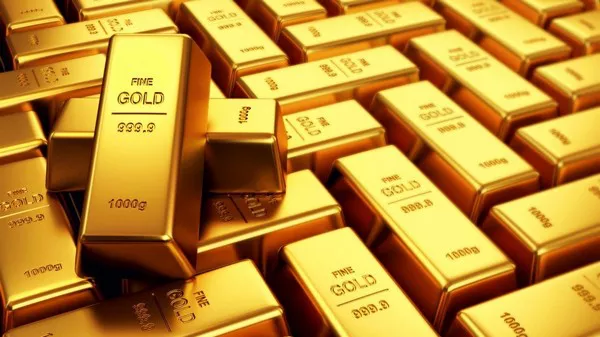Citigroup has raised its short-term forecast for gold prices to as high as $3,500 per ounce, citing heightened geopolitical tensions and protectionist policies as key drivers behind the metal’s rally. However, the Wall Street giant diverges from some of its peers by warning of a likely price correction in the long term.
In a research note released Sunday, Citigroup’s commodities analysts said they now expect gold to trade between $3,100 and $3,500 over the next three months, an upgrade from their previous range of $3,000 to $3,300 set on May 12.
The revised outlook reflects mounting investor anxiety following recent trade threats from former President Donald Trump. On May 24, Trump threatened to impose a 50% tariff on European Union imports starting June 1. However, he postponed the measure to July 9 after a phone call with European Commission President Ursula von der Leyen.
While gold has surged as a safe-haven asset, Citigroup remains cautious beyond 2025. The bank forecasts a notable correction in gold prices during 2026–2027, diverging from bullish long-term outlooks by Goldman Sachs and Deutsche Bank. Goldman expects gold to hit $4,000 by 2026, while Deutsche Bank sees prices breaking $3,700 as early as next year.
Caution Over Long-Term Demand Trends
Citigroup cited two major risks to sustained gold price gains:
Political and Economic Shifts: Upcoming U.S. midterm elections and increased expectations of Federal Reserve interest rate cuts could ease economic fears, reducing safe-haven flows into gold.
Saturation in Household Holdings: Data shows global household gold holdings are at a 50-year high. The portion of gold in household net wealth has climbed to 3%, double the level of five years ago. This saturation could lead to reduced demand and increased selling pressure.
Despite earlier bullish sentiment in 2023 and early 2025, Citigroup’s tone has shifted. The bank first forecasted $3,500 gold prices in April 2025, amid rising concerns over the Federal Reserve’s independence. This helped push gold spot and futures prices to briefly surpass that level on April 22. However, a thaw in global trade tensions—particularly improved U.S.-China relations and tariff reductions—led to a decline in prices and a revision in Citigroup’s short-term outlook to $3,000–$3,300. Gold prices stabilized within that range, reaching around $3,250 in mid-May.
As of Monday, gold spot prices were trading near $3,347 per ounce, down 0.4%, after Brussels indicated it would speed up negotiations with Washington to avoid a trade war. Although tensions cooled following reciprocal statements from both sides, the market remains sensitive to geopolitical shifts.
Tactical Opportunities Ahead, But No Long-Term Rally
Looking to the second half of 2025, Citigroup expects gold to remain volatile within the $3,100–$3,500 band, offering short-term tactical opportunities rather than long-term directional bets. The analysts emphasize that while demand remains strong in key markets like China and India—even at record-high prices—the potential for a reversal is growing.
“Extremely long” market positioning, particularly among ultra-high-net-worth individuals and affluent households, may signal an inflection point. Citigroup warns that many of these investors could begin profit-taking soon, exerting downward pressure on prices.
According to the report, global gold investment demand now accounts for roughly 0.5% of global GDP, the highest proportion in over five decades—surpassing levels seen during the 1980 oil crisis. While this surge reflects a strong investment appetite, it also raises concerns of market saturation.
Conclusion
Citigroup’s latest stance underscores growing divergence among major Wall Street institutions over the trajectory of gold. While geopolitical uncertainty and protectionist trade threats continue to support short-term gains, structural risks and saturated investor positioning raise red flags for the medium to long term.
As the gold market remains highly sensitive to macroeconomic and political shifts, Citigroup’s call for caution adds a note of skepticism amid an otherwise bullish narrative.


